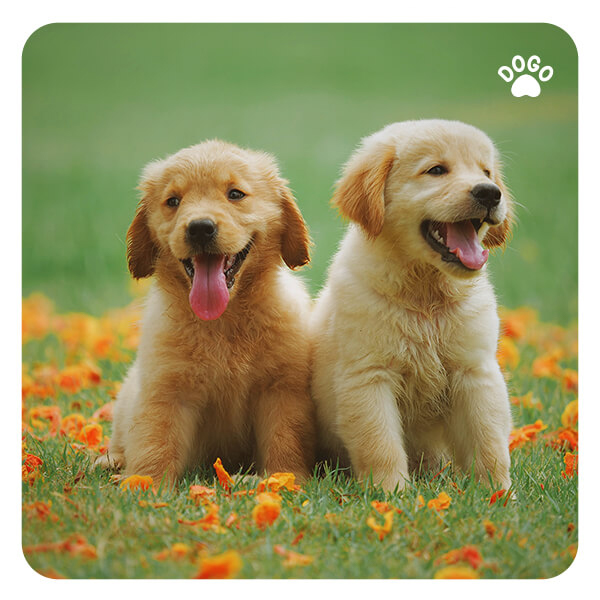 With or without pandemic, every dog and puppy parent understands the importance of socializing their four-legged family members. But the “When” and “How” is not always clear. In this article, we will explain the process in detail.
With or without pandemic, every dog and puppy parent understands the importance of socializing their four-legged family members. But the “When” and “How” is not always clear. In this article, we will explain the process in detail.
You can also read this article in Dogo App.
When to Socialize Your Puppy
When you get your new family member, everything in your environment is new to them. So even while you keep them at home, they are already being socialized to many novelties: Environment, noises, smells, people in your household, other animals in your household, movements in and around your house, the list is long!
Allow your dog to settle into this “new normal” for 1-2 weeks. It often already includes the first visit to your veterinarian. Then, if it doesn’t seem too stressful for your pup, you can add some exploration of the neighborhood on a leash. Socialization periods in puppies have been studied a lot, and different recommendations have been made. Here are some important dates and findings:
The Socialization Window
The socialization window (while puppies are willing to accept novelties as “normal” rather than showing fear) starts closing at 3-4 months and is completed at about 6 months.
The Fear Periods
 The dogs will go through a couple of fear periods, one at around 9 weeks and another at about 6-9 months. They might get rather sensitized to novelties during this time instead of desensitized. Depending on the breed and individual genetics, these periods can be more or less prevalent. Especially during these periods, it is crucial to help your dog feel safe.
The dogs will go through a couple of fear periods, one at around 9 weeks and another at about 6-9 months. They might get rather sensitized to novelties during this time instead of desensitized. Depending on the breed and individual genetics, these periods can be more or less prevalent. Especially during these periods, it is crucial to help your dog feel safe.
Veterinarians often tell dog parents to keep their puppies at home, off the ground, and away from other dogs until their vaccination series is finished. It usually happens at 4 months. These precautions are in place to prevent contracting deadly diseases like Parvo and Distemper. While these diseases are still quite common, especially Parvovirosis, it has also become clear that lack of socialization can be in the long term as deadly to dogs.
How to Socialize Your Puppy
When introducing a dog to novelties, they mustn’t get overwhelmed. “The more – the better” is not true. It will cause the dog to shut down, get overstimulated and/or sensitized rather than desensitized to that novelty.
What Novelties/ Stimuli to Socialize Your Dog to?
The list is endless! There are many novelties out in the world, but also right around you, that are new to your puppy.
-
People
Family, visitors, strangers, bearded, age, shape, movement, outfit
-
Animals
Dogs of all shapes and sizes, farm animals, small pets, wild animals
-
Places
Friend’s home, store, veterinary clinic, airport, train depot, park, trails, campground, daycare, training facility
-
Floors and Ground
Grass, wood, tile, wet, stairs, elevator, escalator, concrete, bridge, grates
-
Objects
Vacuum, mower, snowmachine, 4wheeler, broom, pots, and pans, umbrella, garbage can or bag, new wall mount, rearranged furniture, crate
-
Visual and Noises
Train, vacuum, horn, gunshot, fireworks, motorbike, doorbell, crowds, bicyclist, jogger, cars, trucks, mail carrier, odd movements
-
Handling
Being touched, moved, handled in different ways and by different people, tight hold, hugging, collar grabbing, exam of ears, mouth, teeth, medicating ears, eyes or giving pills, tolerating muzzle, cone, booties, clothing, and bandage.
When introducing your puppy to new experiences, it is important to keep the experience positive. You can use treats and toys to reward your puppy for good behavior and to associate positive emotions with new experiences. You should start with less overwhelming experiences and gradually increase the level of difficulty. If your puppy shows signs of fear or anxiety, you should stop and try again another time. It is important to remember that socialization should be a positive and enjoyable experience for your puppy.
To help your puppy adjust to their new surroundings and make the socialization process easier, you can create a safe and comfortable space for them in your home. This space should have their bed, food and water, and a few toys to keep them entertained. You can also play soft music to create a calming environment. You need to ensure that your puppy feels safe and secure in their new home before introducing them to new experiences.
Puppy’s Reaction
When dogs experience a novelty, they can react in three ways:
- not react (neutral);
- positive emotions (happy);
- negative emotions (fear).
We want happy emotions, and when we see negative emotions, it is clear that we need to “work on that” to turn that around. What we often overlook are neutral reactions. It’s uneventful and might look like “acceptance” of the stimulus. In reality, the dog has not decided which way to go yet. Often a non-reaction can already be a silent “shut-down,” leaning to the negative emotion of fear.
However, even if a reaction is truly “neutral,” it will not stay that way. Over time, the stimulus will become rather annoying or even threatening to the dog, causing a fear reaction. It is typical with noises but can happen with any stimulus.
Trust the Process
 Socializing your puppy is the most significant task as a new dog parent. Whether or not your dog will become a well-behaved, social pet is entirely up to you. Therefore, we recommend you go through this process step by step and don’t overstimulate your dog with too many novelties at the same time. Soon, you will enjoy having a happy pup, on the way to becoming your best friend for life.
Socializing your puppy is the most significant task as a new dog parent. Whether or not your dog will become a well-behaved, social pet is entirely up to you. Therefore, we recommend you go through this process step by step and don’t overstimulate your dog with too many novelties at the same time. Soon, you will enjoy having a happy pup, on the way to becoming your best friend for life.
[/fusion_text]



